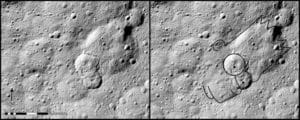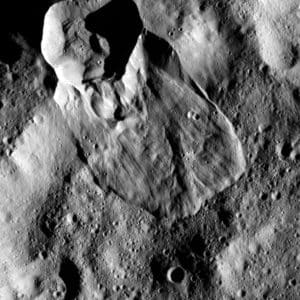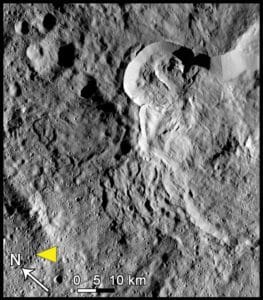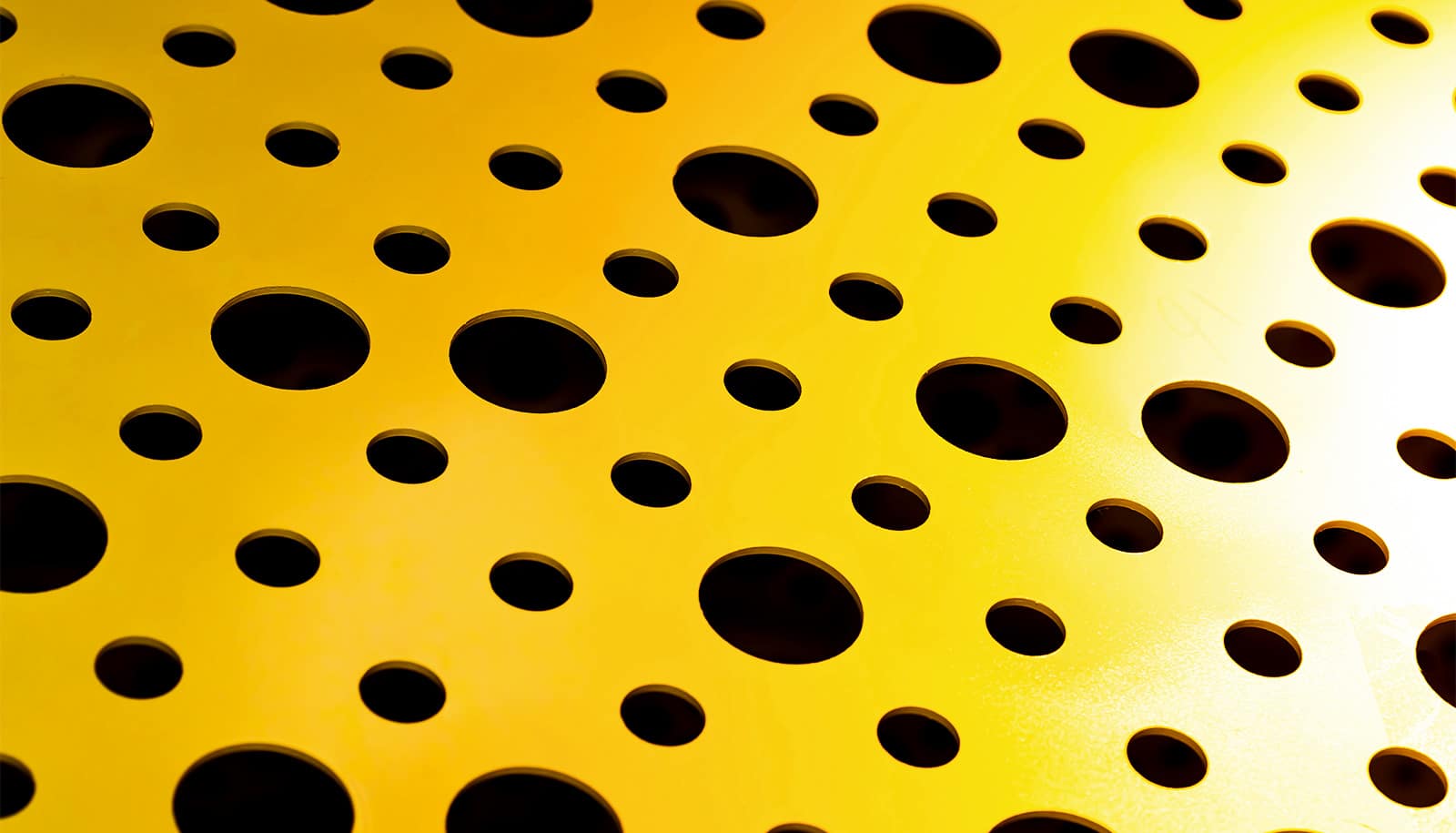Massive landslides, similar to those found on Earth, are occurring on the asteroid Ceres, according to a new study. The work adds to the growing evidence that Ceres retains a significant amount of water ice.
Published in Nature Geoscience, the study uses data from NASA’s Dawn spacecraft to identify three different types of landslides, or flow features, on the Texas-sized asteroid.
Type I are relatively round, large, and have thick “toes” at their ends. They look similar to rock glaciers and icy landslides in Earth’s arctic. Type I landslides are mostly found at high latitudes, which is also where the most ice is thought to reside near Ceres’ surface.
Type II features are the most common of Ceres’ landslides and look similar to deposits left by avalanches on Earth. They are thinner and longer than Type I and found at mid-latitudes. The authors affectionately call one such Type II landslide “Bart” because of its resemblance to the elongated head of Bart Simpson from The Simpsons.

Ceres’ Type III features appear to form when some of the ice melts during impact events. These landslides at low latitudes are always found coming from large-impact craters.
Britney Schmidt, assistant professor at Georgia Tech and Dawn science team associate, believes it provides more proof that the asteroid’s shallow subsurface is a mixture of rock and ice.
“Landslides cover more area in the poles than at the equator, but most surface processes generally don’t care about latitude,” says Schmidt, a faculty member in the School of Earth and Atmospheric Sciences. “That’s one reason why we think it’s ice affecting the flow processes. There’s no other good way to explain why the poles have huge, thick landslides; mid-latitudes have a mixture of sheeted and thick landslides; and low latitudes have just a few.”


The study’s researchers were surprised at just how many landslides Ceres has in general. About 20 percent to 30 percent of craters greater than 6 miles (10 kilometers) wide have some type of landslide associated with them. Such widespread features formed by “ground ice” processes, made possible because of a mixture of rock and ice, have only been observed before on Earth and Mars.
Based on the shape and distribution of landslides on Ceres, the authors estimate that the upper layers of Ceres may range from 10 percent to 50 percent ice by volume.
“These landslides offer us the opportunity to understand what’s happening in the upper few kilometers of Ceres,” says Georgia Tech PhD student Heather Chilton, a coauthor of the paper. “That’s a sweet spot between information about the upper meter or so provided by the GRaND (Gamma Ray and Neutron Detector) and VIR (Visible and Infrared Spectrometer) instrument data, and the tens of kilometers-deep structure elucidated by crater studies.”
Tiniest asteroid is only 6 feet across
“It’s just kind of fun that we see features on this small planet that remind us of those on the big planets, like Earth and Mars,” Schmidt says. “It seems more and more that Ceres is our innermost icy world.”
NASA’s Science Mission Directorate in Washington, DC manages the Dawn mission for JPL. Dawn is a project of the directorate’s Discovery Program, which NASA’s Marshall Space Flight Center in Huntsville, Alabama, manages. UCLA is responsible for overall Dawn mission science. Orbital ATK Inc., in Dulles, Virginia, designed and built the spacecraft. The German Aerospace Center, Max Planck Institute for Solar System Research, Italian Space Agency, and Italian National Astrophysical Institute are international partners on the mission team.
Source: Georgia Tech



